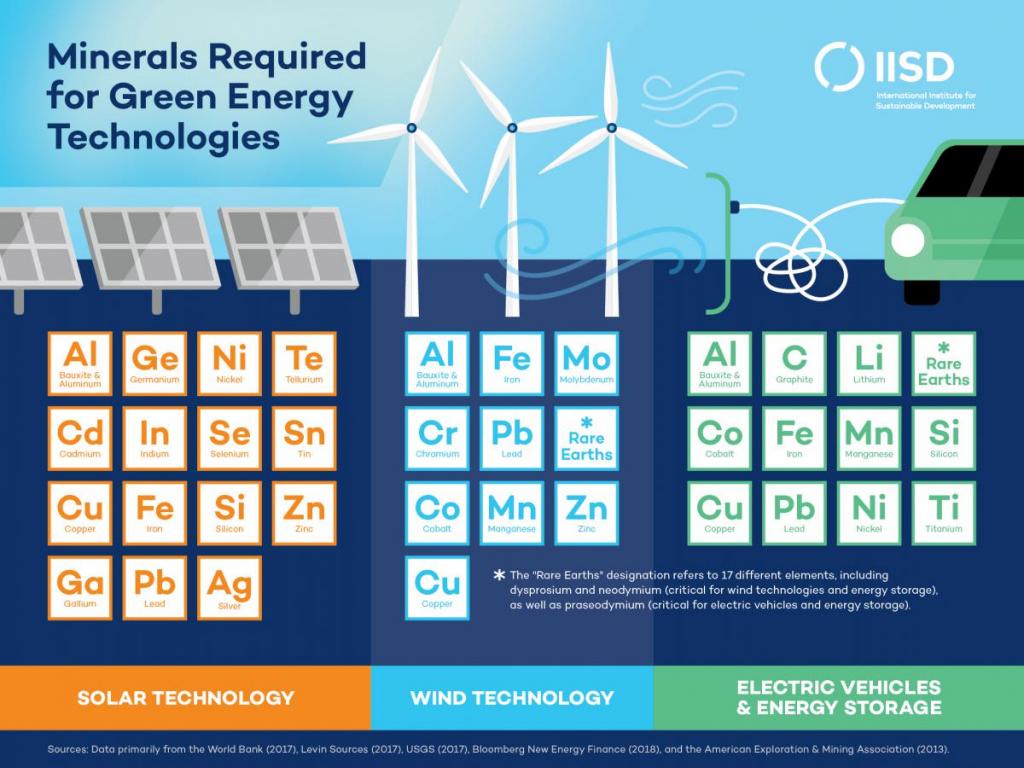Clean Power With a Clean Conscience
Lowering our carbon footprint cannot come at the expense of people in the world’s most vulnerable places.
Transitioning to a low-carbon economy is necessary for a cleaner, safer, healthier future. Any actions to reduce our carbon footprint must be carefully managed, however, to ensure they promote peace and sustainable development and do not exacerbate conflict and violence.
High-tech devices like solar panels, electric cars and wind turbines require a complex cocktail of minerals and metals to build and run. Some of the largest mineral reserves are found in countries with weak regulations and a history of instability and conflict.
Being a conscious consumer means knowing the impacts of our purchase decisions and demanding responsible and accountable supply chains.
To illustrate, consider the Democratic Republic of the Congo (DRC). The country has the largest global reserves of cobalt—essential for battery technology—alongside some of the lowest rankings for human development. Mining is the country’s primary source of export income, so the anticipated spike in demand for cobalt as clean energy technologies take off could have positive economic benefits. But the DRC also has a history of violent conflict, corruption, and weak governance. International organizations have witnessed child labour, dangerous conditions, and human rights abuses at existing cobalt mining sites.
The Democratic Republic of Congo has some of the largest reserves of cobalt, a mineral essential for battery technology. (Photo: Fairphone CC BY-NC 2.0)
Being a conscious consumer means knowing the impacts of our purchase decisions and demanding responsible and accountable supply chains. This must include ensuring the resources required for clean energy are extracted and traded in a conflict-free way.
Recently, IISD overlaid fragility indicators with global reserves of 23 key minerals to map potential hotspots—places where increased demand could lead to grievances, tensions and conflicts. The study was the first of its kind to shed light on an important and often underreported aspect of the clean energy conversation.

A number of initiatives, guidelines, and laws are already in place or under development to prevent the flow of so-called conflict minerals (specifically tin, tungsten, tantalum, and gold). IISD continues to advocate for these mechanisms to expand to the 23 “green conflict minerals” as well. That way, a lower carbon footprint will not come at the expense of people in the world’s most vulnerable places.
You might also be interested in
Solar Power Is Just a Switch Away
Swapping subsidies from fossil fuels to clean options can make renewables the most viable alternative.
Sink, Swim … or Fight Back
After a devastating cyclone struck, the NAP Global Network—hosted by IISD—helped Fiji make a plan to build resilience.
Is It Raining Plastic?
We need more research to understand the effects of microplastics on our fresh water—and find solutions. That's where our team of experts come in.
December 2024 | Carbon Minefields Oil and Gas Exploration Monitor
In November 2024, 23 oil and gas exploration licences were awarded across five countries, with Russia granting the licences that account for the largest portion of embodied emissions.

